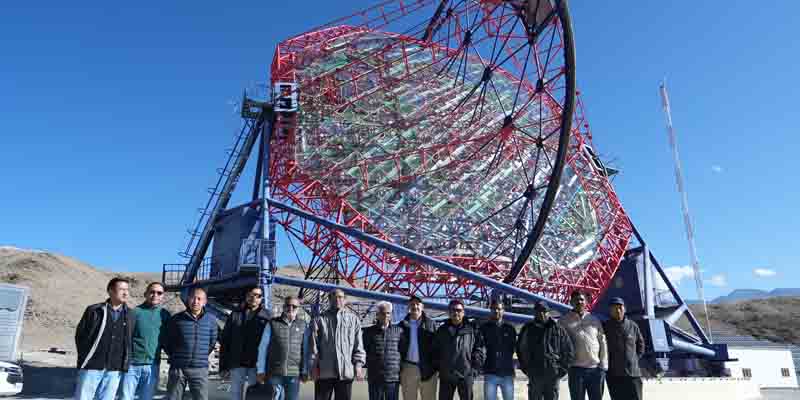- India
- Oct 11
Ladakh gets world’s highest MACE observatory
• The Union Territory of Ladakh gets the Major Atmospheric Cherenkov Experiment (MACE) observatory, the world’s highest imaging Cherenkov telescope, located at an altitude of over 4,300 meters in Hanle.
• Dr. Ajit Kumar Mohanty, Secretary DAE & Chairman of the Atomic Energy Commission, inaugurated the MACE Observatory at Hanle, Ladakh.
Key points:
• MACE is an imaging atmospheric Cherenkov telescope (IACT).
• It is the largest imaging Cherenkov telescope in Asia.
• It was built by Electronics Corporation of India, Hyderabad, for the Bhabha Atomic Research Centre and was assembled at the campus of Indian Astronomical Observatory at Hanle.
• The inauguration of the MACE telescope marks a significant step forward for Indian astrophysics and cosmic-ray research.
• The telescope is the second-largest gamma ray telescope in the world and will help the scientific community enhance its understanding in the fields of astrophysics, fundamental physics, and particle acceleration mechanisms.
• Situated at an altitude of 4,300 m, the MACE telescope will observe high-energy gamma rays, contributing to global efforts to understand the most energetic phenomena in the universe, such as supernovae, black holes, and gamma-ray bursts.
• This facility will also complement global observatories, strengthening India’s position in the field of multimessenger astronomy.
• Looking ahead, the MACE project aims to foster international collaborations, advancing India's contributions to space research and bolstering India's position in the global scientific community.
• The MACE Telescope consists of a large-area tessellated light collector of 356 m², made up of 356 mirror panels. A high-resolution imaging camera weighing about 1,200 kg, for detection and characterisation of the atmospheric Cherenkov events, forms the focal plane instrumentation of the telescope. The elevation over azimuth mounted telescope basket structure has two axes movement capability of ±270° in azimuth and -26° to +165° in elevation for pointing towards any source in the sky and tracking it. The telescope, which weighs about 180 tonnes, is supported on six wheels which move on a 27-metre-diameter track.
• The telescope has an integrated imaging camera, which contains 1088 photo multiplier-based pixels and all the signal processing and data acquisition electronics. The camera communicates the acquired data to the computer system in the control room over optical fiber.
Manorama Yearbook app is now available on Google Play Store and iOS App Store

